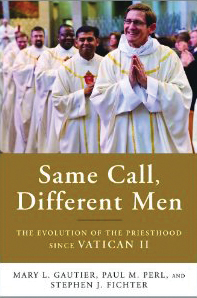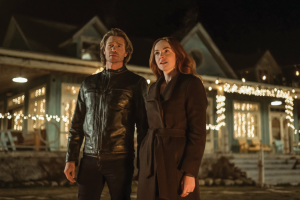By Mary L. Gautier et al. (Liturgical Press, 2012)
 Same Call, Different Men: The Evolution of the Priesthood Since Vatican II presents a comprehensive portrait of the Catholic priesthood in the United States today based on sociological data on 960 priests and interviews with 60 others, both collected in 2009.
Same Call, Different Men: The Evolution of the Priesthood Since Vatican II presents a comprehensive portrait of the Catholic priesthood in the United States today based on sociological data on 960 priests and interviews with 60 others, both collected in 2009.
First the good news: More than 95 percent of priests report that they are very or somewhat happy as priests and that they would definitely or probably become priests if they had to make the choice again, percentages that have grown steadily since 1970. Priests express the greatest satisfaction with leading people in celebrating the sacraments and proclaiming God’s word.
However, the priests surveyed are not shy about expressing their concerns about the priesthood. Perhaps because the average age of priests has increased from 35 to 63, clergy rank the priest shortage No. 1 on their list of most common problems. A close second is “the way authority is exercised in the church.” Many of the comments here critique the U.S. bishops’ role in the sex abuse crisis, both in failing to protect children and in lumping one-time offenders with serial abusers in a “zero tolerance” policy.
Ideological differences also loom large. About two thirds of priests in their 60s—roughly those who make up the Vatican II ordination cohort—consider themselves progressive in theology and pastoral practice. For priests in their 30s—again, roughly the millennial cohort—those percentages are reversed; two of three priests consider themselves traditional.
As the reflections by clerics and two scholars offered at the end of the book attest, this short study offers much food for thought about the future of the Catholic priesthood, especially in its calls to bridge the gaps between older and younger priests so as to increase even further the satisfaction of priests and the people they serve.
This article appeared in the September 2012 issue of U.S. Catholic (Vol. 77, No. 9, page 43).












Add comment